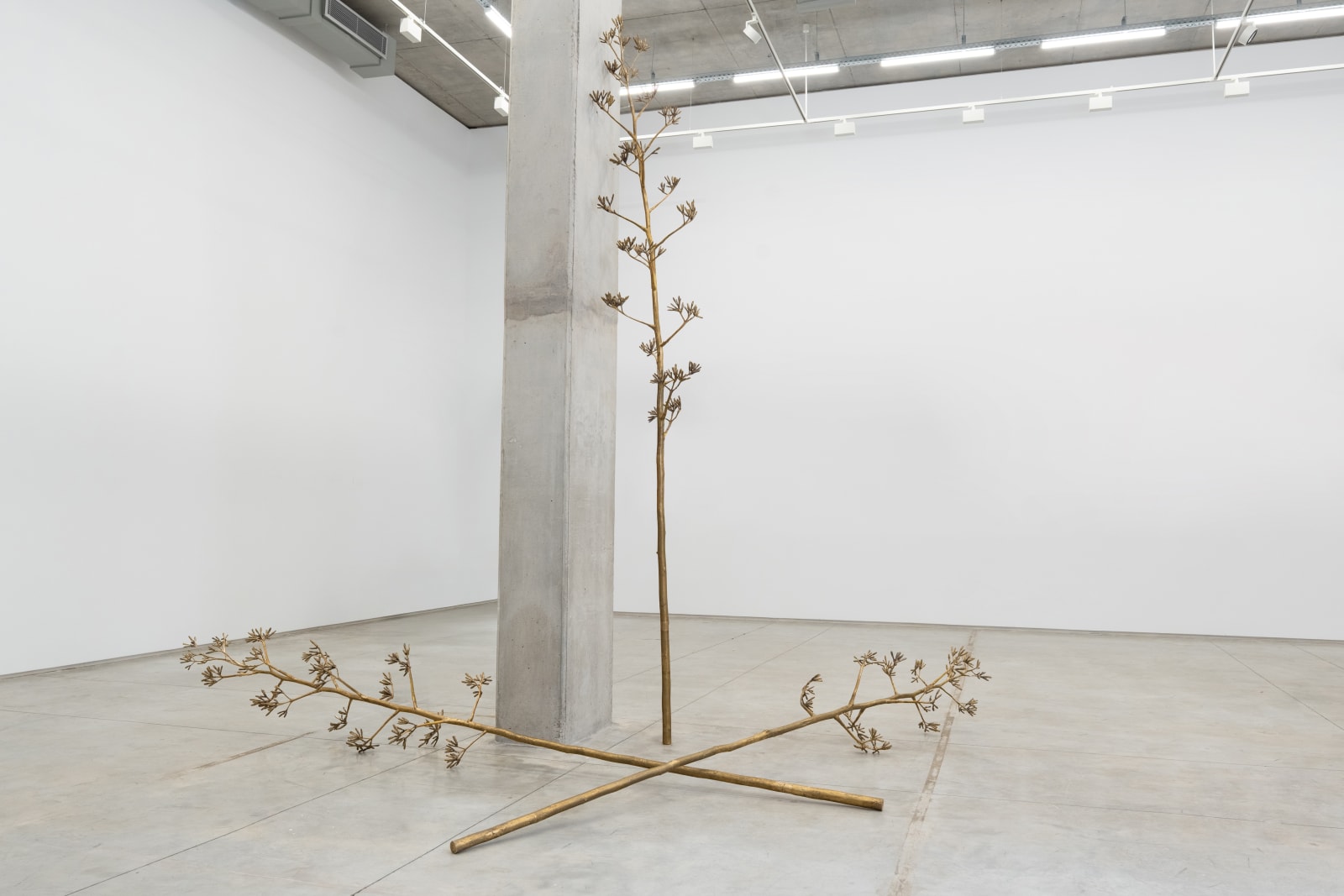
M’barek Bouhchichi Moroccan , b. 1975
Vegetal Man, 2025
Brass
Variable Dimensions
424h x 65diam cm
409h x 65diam cm
372h x 65diam cm
424h x 65diam cm
409h x 65diam cm
372h x 65diam cm
MB-000127
The brass sculpture Vegetal Man (2025) features three agave plant stalks. The agave blooms and produces seeds only once at the end of its life. After flowering, the plant dies...
The brass sculpture Vegetal Man (2025) features three agave plant stalks. The agave blooms and produces seeds only once at the end of its life. After flowering, the plant dies but leaves seeds and shoots behind, allowing for new growth and ensuring the species' survival. Its death allows for multiple lives to bloom. For Bouhchichi, the agave’s life cycle resembles the fate of those who decide to cross the Sahara and the Mediterranean Sea in pursuit of a better life for themselves and their kin. Collective survival requires individual sacrifice. Vegetal Man tells a story where torment and mourning are ever-present in Black lives, but where rebirth and transmission never cease. Vegetal Man was fabricated using brass—an alloy of copper and zinc. Copper, a mineral and a pure chemical element, was historically used as a medium of exchange in the Sahel region, copper metallurgy being native to Niger and Mauritania. It is a mineral associated with circulation and transaction, as well as ritual and healing. Using copper alloys is a way for the artist to suggest the promise of transformation that the experience of migration entails. For all his endeavors towards instituting a Black space of representation, Bouhchichi refuses all ideas of racial purity. Marked by physical displacement and existential placelessness, Black life is inherently multiple and, as such, must be thought of in relation. Blackness cannot be reduced to a single model.